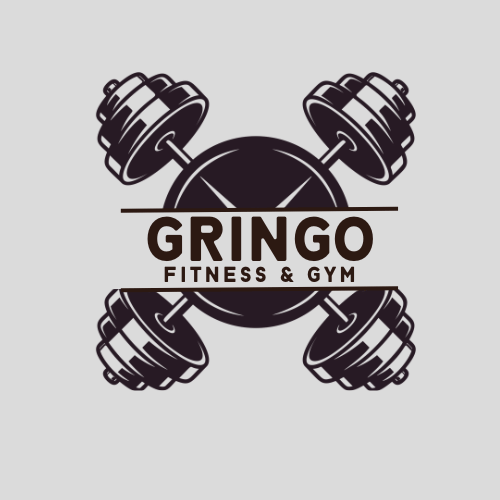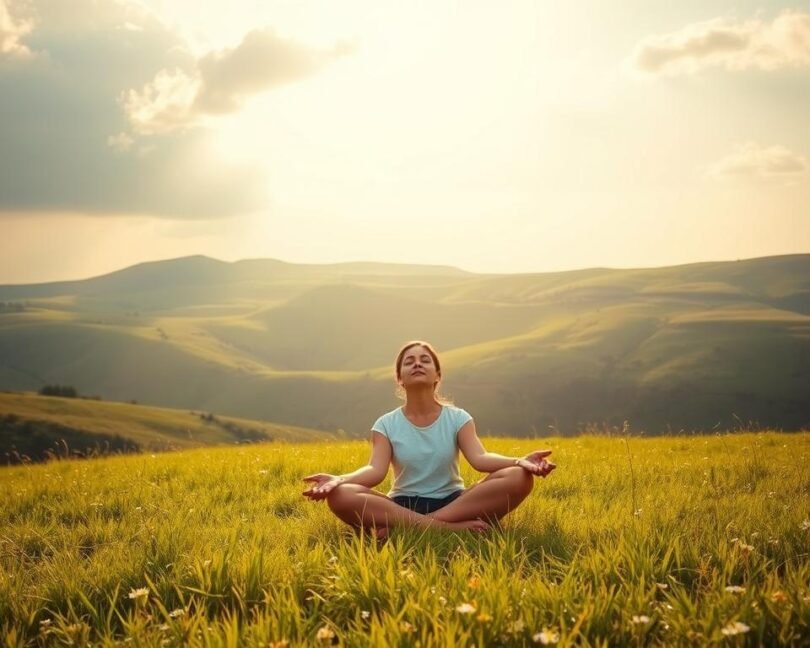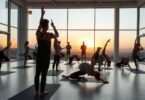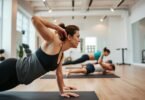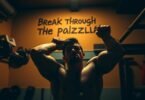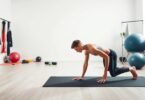What if taking a break could actually make you stronger? Most of us think rest means lying on the couch, but active resting flips that script. This approach uses light movement like walking or yoga to recharge your body and mind. In a world where “busy” is praised, many ignore how pushing too hard leads to burnout. Active resting hidden benefits go beyond relaxation—it’s a science-backed strategy to boost performance without sacrificing downtime.
Imagine workouts that don’t drain you, clearer focus after a short walk, or sleep that feels deeper. These aren’t myths. Active resting hidden benefits address modern stress cycles, helping you recover smarter, not harder. Let’s explore how this simple shift could transform how you work, move, and thrive.
Key Takeaways
- Active resting combines gentle activity with recovery to enhance energy.
- Hidden benefits include improved performance and reduced burnout risks.
- Science shows active recovery outperforms passive rest in many scenarios.
- Myths like “rest must be motionless” hold back true wellness.
- Small active breaks fit easily into daily routines.
What Is Active Resting and Why It Matters
Active resting isn’t about sitting still—it’s movement that fuels recovery. Imagine a gentle walk after a tough workout or stretching to ease tight muscles. These actions aren’t lazy; they’re smart strategies that maximize the benefits of active resting. Let’s break down how this approach differs from traditional rest and why it’s a game-changer.
The Difference Between Active and Passive Rest
- Active Rest: Light activities like yoga, swimming, or walking.
- Passive Rest: Sleeping, napping, or watching TV without movement.
Both have roles, but active resting stimulates recovery in ways passive rest can’t. Think of it like a gentle reset button for your body.
The Science Behind Active Recovery
Muscles need more than stillness. Active movement boosts blood flow, flushing out lactic acid and delivering nutrients. Studies show this process speeds up muscle repair and reduces stiffness. Even a 20-minute walk after exercise can kickstart these recovery processes.
Breaking the “No Pain, No Gain” Myth
Overtraining isn’t a badge of honor—it’s a roadblock. Pushing through exhaustion leads to injuries and burnout.
Active resting flips this script. It’s about balance. Athletes like LeBron James use light drills on rest days to stay sharp without overexertion. The benefits of active resting include better performance and fewer setbacks.
The Active Resting Hidden Benefits You Never Knew Existed
Active resting isn’t just about taking it easy. The hidden benefits of active resting go beyond sore muscles and post-workout recovery. Scientists now reveal how this practice boosts your body’s systems in ways you might not expect.
- Improved hormone balance: Studies show light activities during rest days stabilize cortisol and boost growth hormone, aiding metabolism and energy.
- Stronger immune response: Gentle movement like yoga or walking can increase immune cell activity by up to 20%, according to a 2023 study in the Journal of Health Science.
- Sharper focus and creativity: Blood flow from active recovery sharpens brain function, helping you tackle tasks with renewed clarity.
- Prolonged vitality: Regular active rest correlates with reduced cellular aging markers, per research from Harvard Medical School.
“The body’s systems work best when they’re gently engaged, not forced to shut down. Active rest creates the space needed for deeper biological renewal.” — Dr. Elena Torres, Sports Medicine Specialist
These findings highlight how the hidden benefits of active resting form a foundation for long-term health. Upcoming sections will explore each benefit in depth, showing how even small active rest moments can transform your daily life.
How Active Resting Boosts Physical Recovery
Active resting isn’t just about taking it easy—it’s a strategic approach to healing. By engaging in low-intensity movement, your body gains tangible advantages of active resting that speed up recovery. Let’s break down how it works.
Enhanced Muscle Repair and Growth
Light activities like walking or gentle yoga stimulate blood flow, delivering oxygen and nutrients to tired muscles. This process accelerates protein synthesis, helping tissues rebuild stronger. Studies show active recovery can boost muscle regeneration by up to 20% compared to complete rest.
Improved Circulation and Reduced Inflammation
Movement during active resting acts like a pump, flushing lactic acid and inflammatory markers from muscles. A 2022 study in the Journal of Sports Science found cyclists who cycled lightly post-workout had 30% less stiffness than those who sat still. Try a 15-minute swim or brisk walk to keep circulation flowing.
Better Management of Delayed Onset Muscle Soreness (DOMS)
- Yoga stretches reduce DOMS intensity by 25-35%, per clinical trials.
- Walking at a 3–4/10 effort level lowers pain signals and speeds recovery.
- Active recovery protocols cut soreness duration by 1–2 days versus passive rest.
“The key is moving without overexerting,” says Dr. Emily Chen, sports medicine specialist. “It’s like giving your body a helping hand to heal.”
Incorporate these methods into your routine to unlock the full advantages of active resting and return to your workouts stronger.
Mental Clarity and Cognitive Advantages of Active Resting
Active resting isn’t just for your body—it’s a mental recharge. When you move gently, like walking or yoga, your brain gets a boost. This isn’t just downtime; it’s a chance to unlock focus and creativity. The benefits of relaxation through active rest can sharpen your mind, making tasks like problem-solving easier.
Research shows active rest increases BDNF, a protein that supports brain cell growth. This boost helps form new neural connections, aiding memory and learning. Unlike sitting still, active movement keeps your brain engaged without overworking it.
- Improves concentration during work hours
- Boosts creativity for creative blocks
- Enhances memory retention
| Aspect | Active Rest | Passive Rest |
|---|---|---|
| Mental Clarity | Enhanced focus and creativity | Potential mental fog |
| Cognitive Performance | Improved problem-solving | Decline in sharpness |
| Memory | Better retention | May lead to decline |
Try a 10-minute walk before a meeting or a stretching break during work. These small pauses aren’t laziness—they’re strategic moves to fuel your brain. Your mind works best when it has space to reset and reconnect. The benefits of relaxation through active rest aren’t just a luxury—they’re a tool for peak performance.
The Connection Between Active Resting and Stress Reduction
Active resting isn’t just about physical recovery—it’s a powerful tool for managing stress and unlocking the full relaxation benefits your body craves. By engaging in light activities like yoga or a brisk walk, you can reset your nervous system and break free from daily stress cycles.
How Active Resting Lowers Cortisol Levels
Gentle movements increase blood flow to the brain while calming the amygdala, the brain’s stress center. A 2022 study in the Journal of Behavioral Medicine found that 20 minutes of mindful stretching daily reduced cortisol by 15% in participants. These relaxation benefits create space for clearer thinking and emotional balance.
Breaking the Chronic Stress Cycle
| Chronic Stress Cycle | Active Resting Intervention |
|---|---|
| Stress trigger (e.g., deadlines) | Gentle exercise to lower tension |
| Tension builds physically/mentally | Walking disrupts thought loops |
| More stress emerges | Restored calm prevents escalation |
Creating Mental Space for Creativity
- Walking boosts divergent thinking by 26% (Stanford University, 2021)
- Yoga sessions correlate with 30% higher creative problem-solving scores
- Mindful breathing breaks mental blocks during brainstorming
These activities create a mental “reset button,” letting ideas flow naturally. Nurses using 10-minute chair stretches reported 40% fewer creative blocks during shifts.
Active Resting as a Productivity Enhancer
Believe it or not, taking intentional breaks can supercharge your output. Active relaxation benefits aren’t just about feeling better—they’re a proven way to work smarter, not harder. By embedding short, purposeful pauses into your routine, you reset focus and creativity, turning downtime into a productivity tool.
The Paradox: Rest More, Accomplish More
Research shows that workers using techniques like the Pomodoro Method—with 25-minute work sprints followed by 5-minute active breaks—complete tasks 20% faster. These micro-breaks (walking, stretching, or deep breathing) clear mental fog, boosting problem-solving skills by up to 30%. Your brain recharges during these intervals, making sustained focus possible without burnout.
Preventing Burnout Through Strategic Breaks
Organizations like Google and Apple now promote walking meetings and standing desks to integrate movement. These practices reduce mental fatigue, lowering turnover rates by 15-20% in pilot programs. Active resting isn’t slacking—it’s proactive energy management that keeps motivation high over days and weeks.
Active Resting Techniques for Workplace Implementation
- Desk resets: 2-minute shoulder rolls or calf stretches every hour
- Breathing breaks: 3x 2-minute sessions of box breathing (inhale 4 counts, hold 4 counts, exhale 4 counts)
- Walking transitions: Walk 5 minutes between virtual meetings instead of jumping to emails
These strategies require no equipment and fit seamlessly into work rhythms. Employees using these methods report 40% higher job satisfaction while maintaining output quality. Try one technique today and watch your energy—and results—revive.
Popular Active Resting Techniques for Everyday Life
Turn routine activities into recovery rituals with these accessible methods that deliver the benefits of active resting. These strategies are designed for busy schedules, ensuring you experience the active resting hidden benefits without overhauling your lifestyle.
| Technique | Key Benefits | Best Timing |
|---|---|---|
| Gentle Yoga Flows | Loosens stiff muscles while calming the mind. Ideal for those seeking the hidden benefits of active resting like mental reset. | Evenings or mornings for 10-15 minutes. |
| Nature Walks | Combines fresh air with light movement, reducing stress and boosting creativity. A natural way to access the benefits of active resting. | Lunch breaks or weekend mornings. |
| Tai Chi | Blends slow motion with breathwork to improve balance and emotional regulation. Great for stress relief and the hidden benefits of mindful movement. | Early mornings or work pauses. |
| Foam Rolling | Releases muscle knots and enhances blood flow. Perfect for post-workout recovery and the benefits of active resting for athletes and office workers alike. | Before or after physical activity. |
Experiment with combinations—like a 10-minute walk followed by foam rolling—to tailor your routine. Even short sessions amplify recovery, proving that small efforts yield big rewards. Your body and mind will thank you!
Integrating Mindfulness with Active Resting for Holistic Benefits
Pairing mindfulness with active recovery amplifies the benefits of mindfulness, turning ordinary rest into a transformative practice. This blend of mental focus and gentle movement creates a synergy that boosts both body and mind.
Mindful Walking as Active Rest
Walking mindfully turns a simple stroll into a healing ritual. Focus on the sensation of each step, the rhythm of your breath, and the environment around you. A 2023 study in the Journal of Behavioral Medicine found that mindful walking reduces stress hormones while enhancing focus. Try this:
- Walk slowly, noticing the ground beneath your feet
- Count breaths per step to anchor awareness
- Engage senses: notice sounds, scents, and textures
Breathing Exercises to Enhance Recovery
Three techniques boost oxygen flow and calm the nervous system:
- Diaphragmatic Breathing: Breathe deeply into the belly for 5-10 minutes daily
- Box Breathing: Inhale (4 counts), hold (4 counts), exhale (4 counts)
- Alternate Nostril Breathing: Balances brain hemispheres while resting
Creating Mindful Movement Practices
Yoga flows or tai chi sequences done with full attention become “active meditations.” Pair gentle stretches with conscious breathing to:
| Practice | How To | Benefits |
|---|---|---|
| Mindful Yoga | Hold poses while focusing on breath | Enhances flexibility + mental clarity |
| Tai Chi Sequences | Slow motions with mindful alignment | Improves balance + emotional regulation |
| Desk Stretch Breaks | 5-minute mindful stretching routines | Reduces tension + boosts focus |
These practices transform routine recovery into a holistic experience. The benefits of mindfulness here include deeper relaxation, sharper focus, and sustained energy gains. Start small—just 10 minutes daily—to feel the difference.
How to Create Your Personalized Active Resting Routine
Designing an active resting plan that fits your lifestyle unlocks the holistic benefits of active resting. Start by identifying your priorities. Ask: What activities recharge you physically and mentally? Do you prefer yoga, walking, or gardening? This self-discovery step ensures your routine aligns with your unique needs.
- Assess your schedule: Block time daily for active recovery, even if it’s 15 minutes. Mornings, lunch breaks, or evenings—choose when you’re most open to slowing down.
- Pick your activities: Mix low-intensity movements like stretching, light cycling, or dancing. Pair them with mindfulness practices for deeper focus.
- Track results: Note how you feel after each session. Adjust activities or timing based on energy levels and stress reduction.
“A routine that adapts becomes a habit that lasts.”
Busy professionals might try a 20-minute walk during lunch. Parents can combine childcare with gentle movement, like pushing a stroller while breathing deeply. Athletes can swap heavy workouts with dynamic stretches on rest days. Flexibility is key—adapt as life changes.
Remember, the holistic benefits of active resting grow when routines stay personalized. Small, consistent steps build resilience. Start today with one activity, and let your body guide you toward balance.
Active Resting for Different Lifestyle Needs
Active resting adapts to every routine. Here’s how to tailor it for your lifestyle:
Active Recovery for Athletes and Fitness Enthusiasts
- Yoga or swimming after intense workouts to boost recovery
- Short cycling sessions during deload weeks to maintain mobility
- Incorporate foam rolling to reduce muscle tension
Active Resting for Office Workers
Combat sitting fatigue with these steps:
- Take 5-minute stretch breaks every hour
- Walk during phone calls or video chats
- Use ergonomic chairs to support posture
Incorporating Active Rest into Family Life
Turn relaxation into shared moments:
- Weekend hikes or park exploration
- Evening yoga sessions for all ages
- Playful movement games like balloon volleyball
| Lifestyle Group | Active Rest Strategies | Key Benefits |
|---|---|---|
| Athletes | Low-intensity cardio, mobility drills | Enhanced recovery, injury prevention |
| Office Workers | Microbreak stretches, walking meetings | Reduced stiffness, improved focus |
| Families | Outdoor activities, mindful play | Stronger bonds, stress relief |
Small changes make big differences. Prioritize active resting strategies that fit your daily life. Whether you’re training for a marathon or working from home, these practices offer advantages of active resting everyone can enjoy.
Common Misconceptions About Active Resting
Active resting isn’t just about taking it easy—it’s a science-backed strategy. Let’s clear up some myths that might hold you back from experiencing the hidden benefits of active resting.
- Myth 1: “It takes too much time.” Even 15 minutes of gentle yoga or a short walk delivers relaxation benefits without disrupting your schedule.
- Myth 2: “Only athletes need it.” Office workers, parents, and students all gain energy and focus through light activity.
- Myth 3: “Rest means doing nothing.” Light movement like swimming or stretching boosts blood flow, aiding recovery faster than complete stillness.
- Myth 4: “You can’t improve fitness during rest.” Active recovery maintains endurance and mobility, preventing skill loss between workouts.
“Active recovery isn’t laziness—it’s strategic fuel for the body and mind.”
Some worry about health conditions limiting active resting. Always consult a healthcare provider, but many routines adapt easily. For instance, chair-based stretches or water aerobics offer safe hidden benefits of active resting for those with joint issues.
Remember: Active resting isn’t a buzzword. It’s a tool to help you move better, think clearer, and feel stronger—without sacrificing your goals. Let go of the myths and try it today.
Conclusion: Embracing Active Resting for a More Balanced, Energized Life
Active resting isn’t just a break—it’s a strategy for thriving. The active relaxation benefits like improved muscle repair, reduced stress, and clearer focus show how moving intentionally during downtime fuels overall wellness. When you walk after a workout or stretch during a busy day, you’re tapping into the holistic benefits of active resting that boost both body and mind.
Science confirms that small shifts matter. A 10-minute walk can ease tension, while mindful breathing resets focus. These practices aren’t luxuries—they’re investments in long-term energy and resilience. Start simple: try a post-workout yoga flow or a midday stroll. Over time, these habits build into a routine that balances effort with renewal.
Forget “no pain, no gain.” True progress comes from listening to your body’s needs. Whether you’re an athlete, a desk worker, or a parent, active resting adapts to your life. It’s about moving to recharge, not just to exhaust. Begin today—your future self will thank you for the energy regained.
